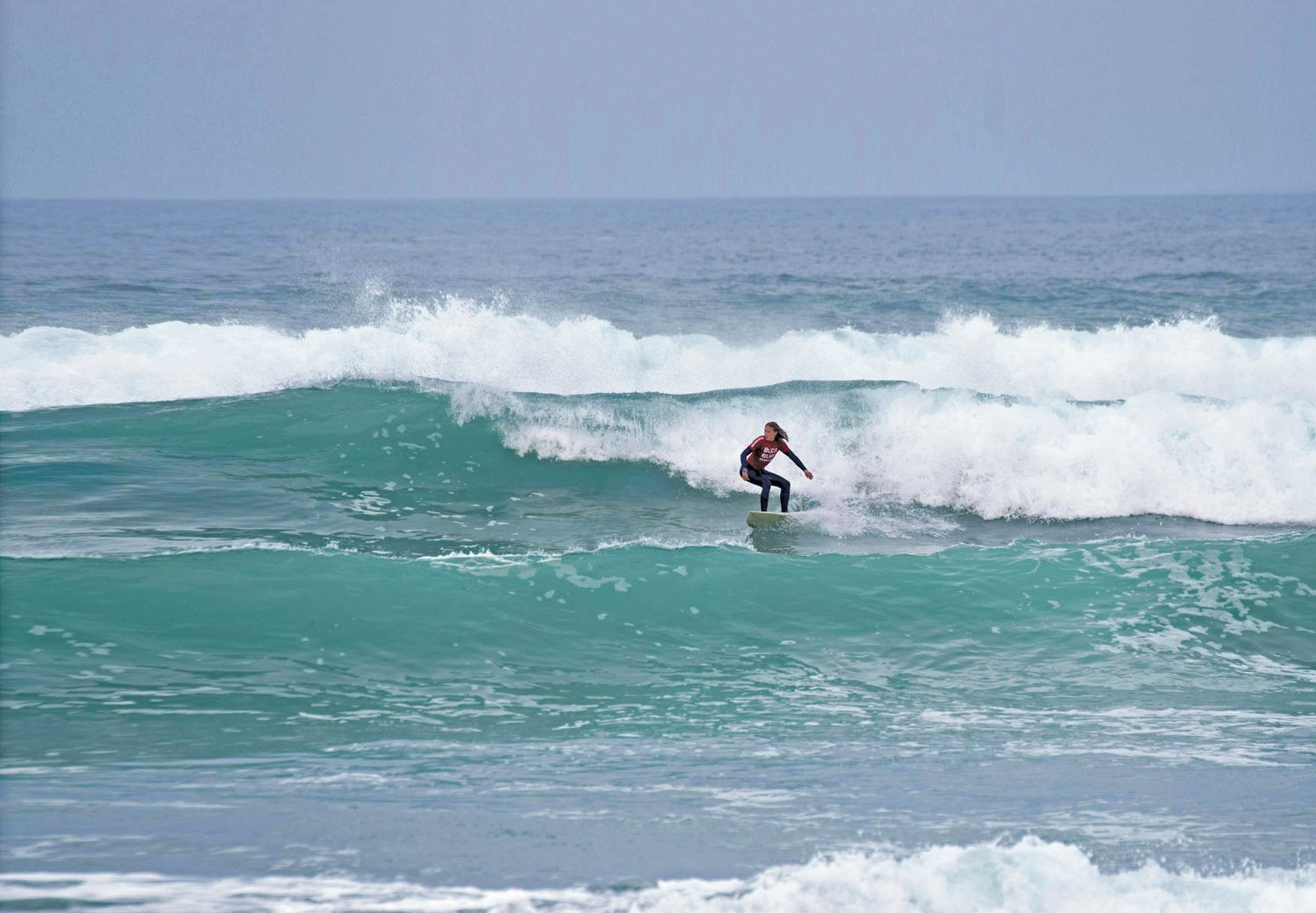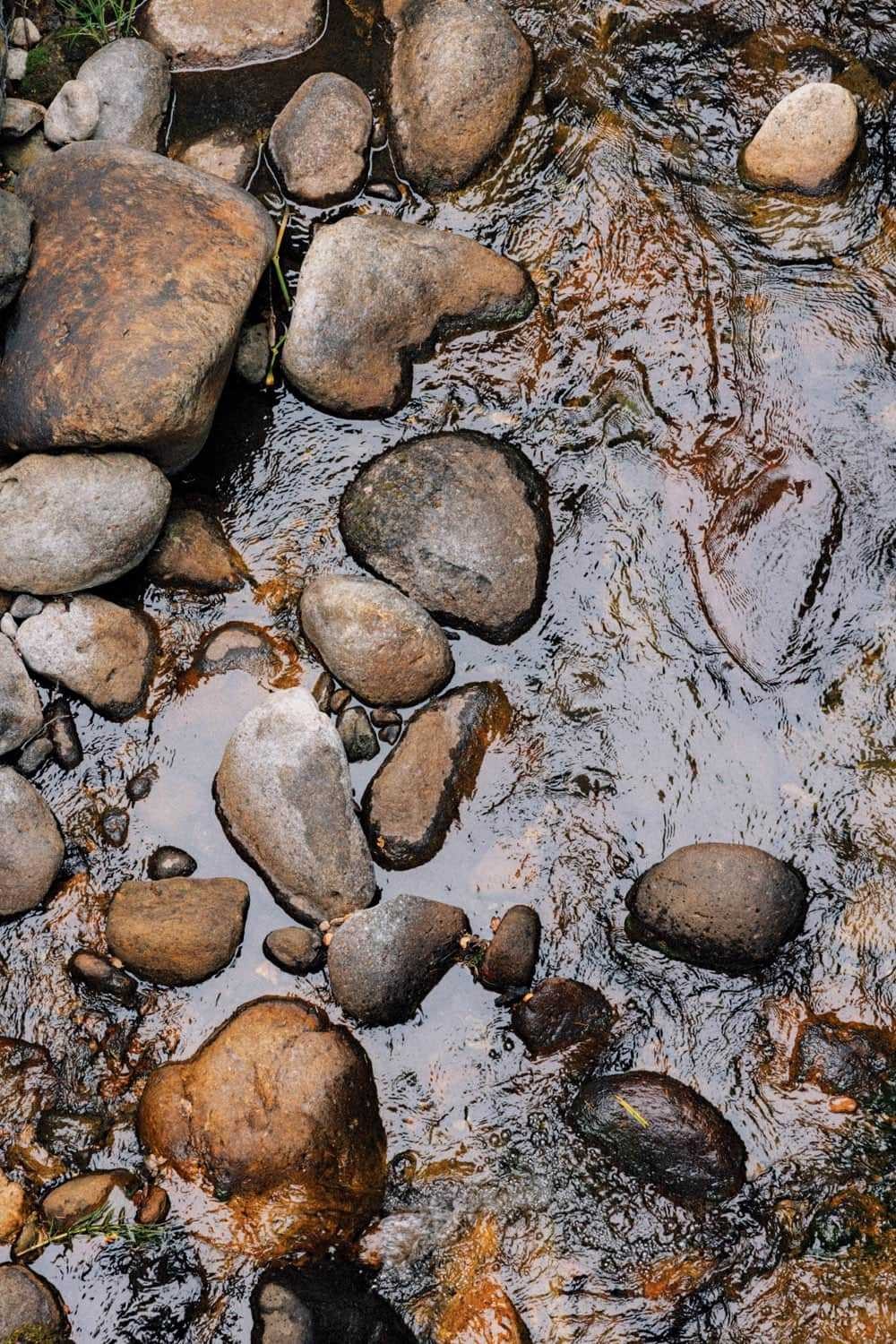Early on a September morning before the sun has risen, I slowly navigate another curve on California State Route 1, noting the just-visible, shadowy rocks offshore jutting out of the dark ocean below. The sound of the waves crashing on the shore fills my mind with details that my eyes cannot yet make out: the ruggedly beautiful Sonoma Coast. I turn from the ocean to climb a long ridge for 6 miles (1.6 kilometers), which brings me to the crest of Peter Michael Winery’s Seaview Estate, the site of our three Pinot Noir vineyards: Le Caprice, Clos du Ciel, and Ma Danseuse. This is one of my favorite moments of the year—standing at the top of the estate, watching the sun’s first rays spread over the vines from the east as I feel the cool ocean fog tumble over the ridge from the west. September means sampling each vineyard block, learning what this year’s growing season has imprinted on the grapes in this unique terroir, and feeling the excitement of the birth of a new vintage of Pinot Noir.
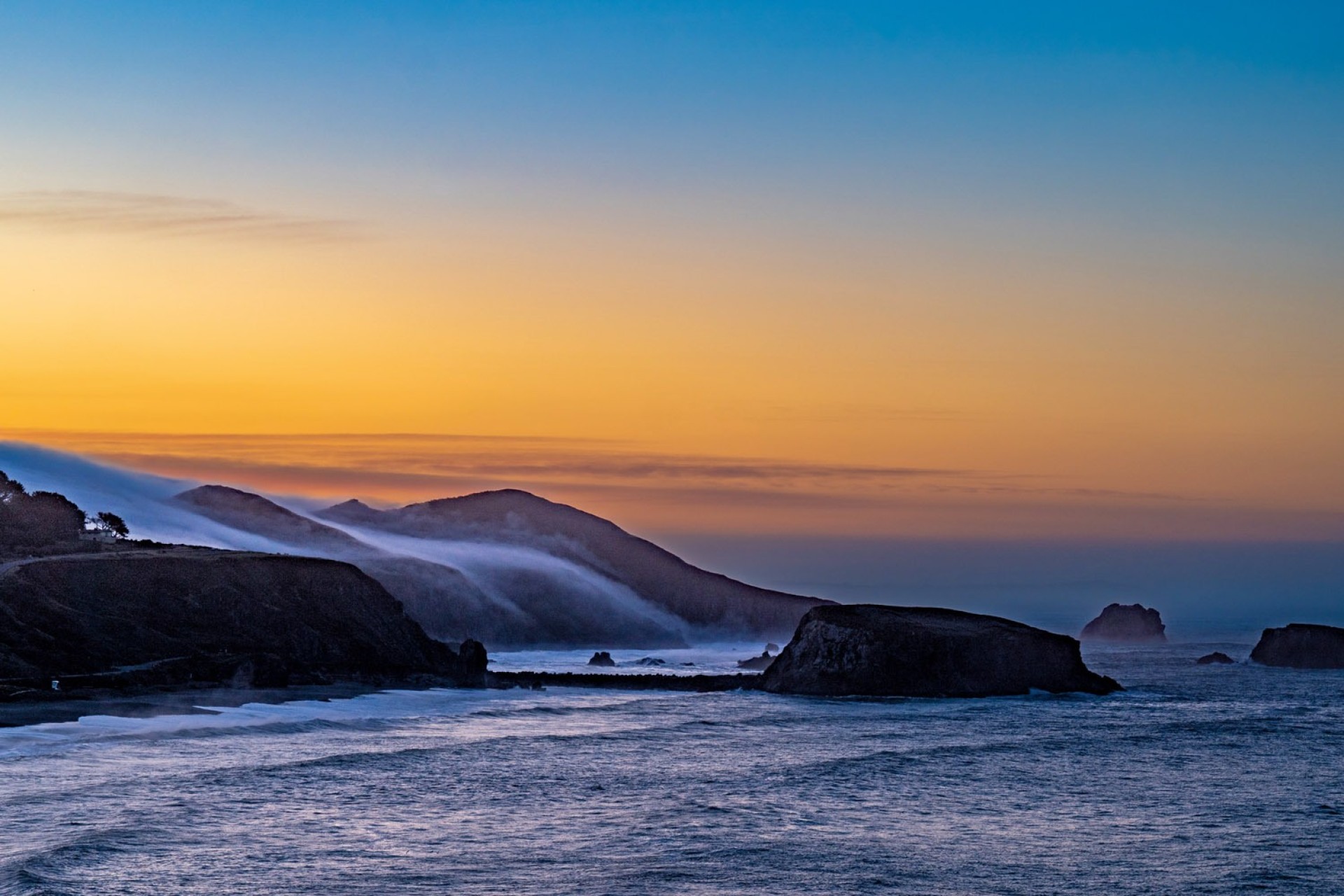
The morning fog that typically drapes the bluffs along the Sonoma coast will dissipate as the sun rises.
I have a deep, personal affinity for this captivating grape variety. The first barrel of wine I ever made was Pinot Noir. My brother-in-law, Raymond, and I had become enamored with the grape during visits to the Sta. Rita Hills in Santa Barbara County, and we decided to craft our terroir-driven wines from the grape variety that shows its connection to the land more faithfully than any other. I was fascinated by how the terroir of each vineyard location and individual blocks translated into distinctively different finished wines. Soon I was traveling to other Pinot Noir–producing regions and visiting winemakers to learn more: the Willamette Valley in Oregon; Central Otago, Marlborough, and Canterbury in New Zealand; and the Santa Lucia Highlands, Santa Maria Valley, and Sonoma and Napa Counties in California.
In 2009, I took my first trip to Côte-d’Or, Burgundy, France. Standing in a subterranean cellar with elder statesman Jean-Louis Trapet and tasting the differences between his Grand Cru 2008 Latricières-Chambertin, Chapelle-Chambertin, and Chambertin out of the barrel was a revelation for me. A few short years later, I found myself learning—hands-on—Burgundy’s traditional approaches to Pinot Noir winemaking from Michel and Frédéric Lafarge at their domaine and appreciating the differences in terroir from each of their parcels in Volnay, Pommard, and Beaune. All of these experiences provided a framework to fully appreciate the uniqueness of the terroir and the resulting personality of the wines from Peter Michael Winery’s Seaview Estate on the Sonoma coast.
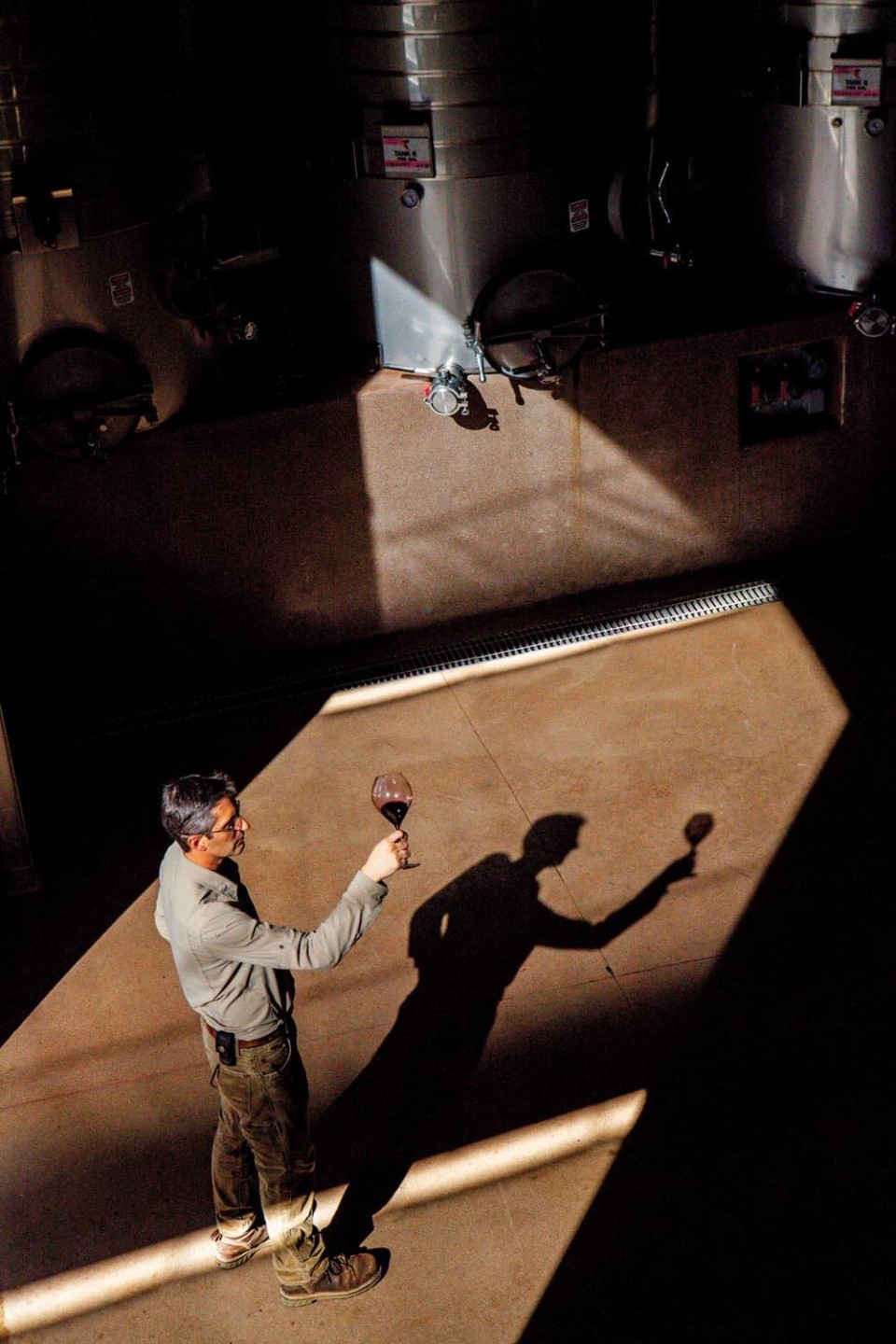
Natural light illuminates the glass, showing the depth of color in the wine.
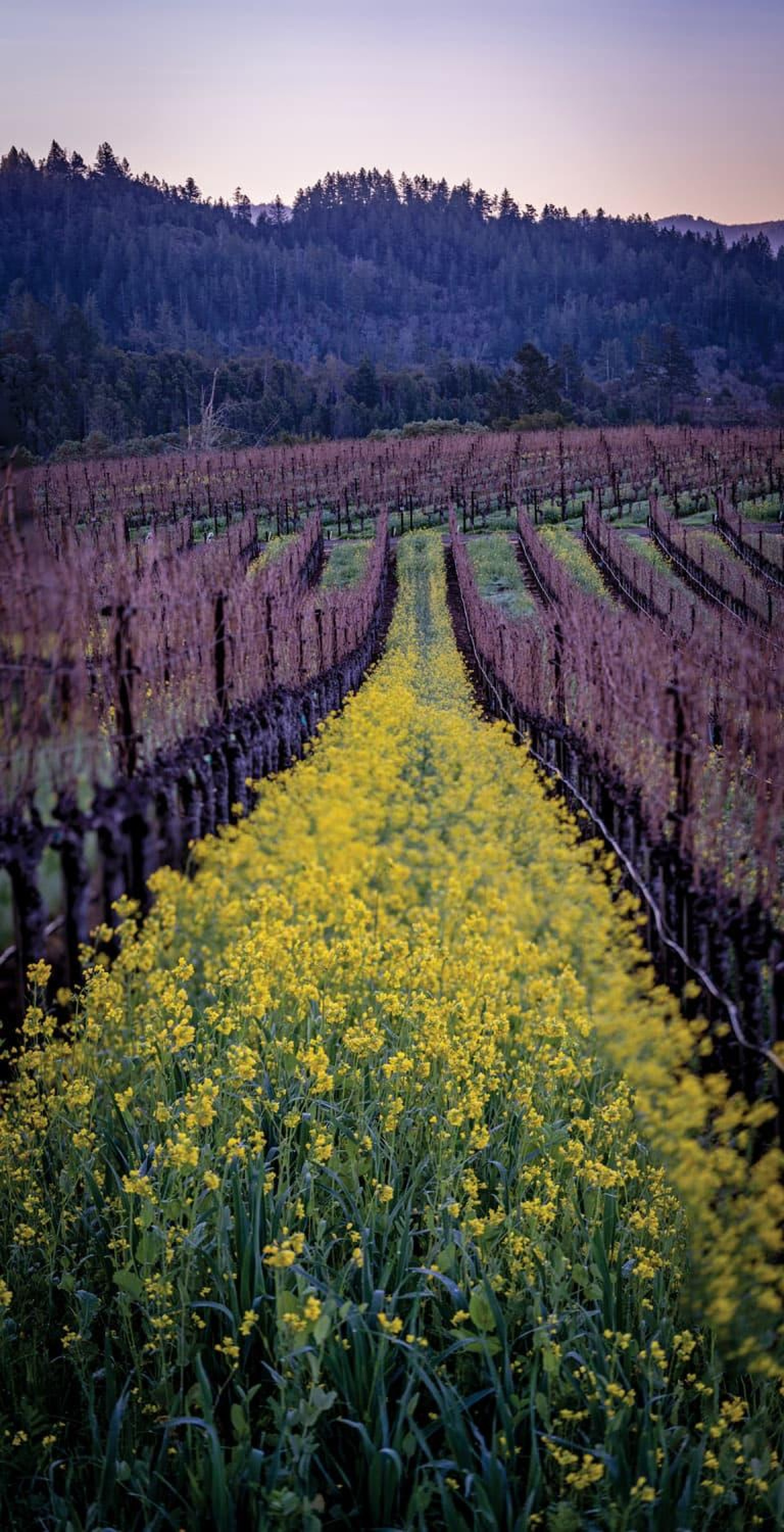
Mustard brightens the rows, signaling the coming of spring.
The Seaview Estate spans 400 acres (162 hectares), with only 26 acres (11 hectares) planted with vineyards; the remaining acres are preserved forests and wildlife corridors. It is located on the eastern side of the first ridge from the Pacific Ocean in the Fort Ross–Seaview American Viticultural Area (AVA). This AVA was officially recognized in 2012 and is distinguished from other areas inland and on the coast by its fruit at high mountain elevations, which range from 920 to 1800 feet (280 to 366 meters), and is perched atop the steep ridges above the Pacific Ocean.
The first vineyards in Sonoma County were planted at the historic Fort Ross fur trading post in 1817. For perspective, fewer than 600 acres (243 hectares) of vineyards have been planted within the 27,500-acre (11,129-hectare) AVA, which is approximately 2 percent, in contrast to 5,000 planted acres (2,023 hectares) out of 5,700 acres (2,307 hectares), which is about 88 percent, in the Oakville AVA. This makes the region a challenging but rewarding area to grow grapes for a refined style of California Pinot Noir.
“This makes the region a challenging but rewarding area to grow grapes for a refined style of California Pinot Noir.”
In May of 2022, the new West Sonoma Coast AVA was approved. The new AVA includes the Fort Ross–Seaview AVA, which has the highest elevations, along with approximately fifty vineyards located within 5 to 7 miles (8 to 11 kilometers) of the ocean. The West Sonoma Coast AVA was established to differentiate these coastal vineyards from the non-geographically defined, much larger 500,000 acres (202,343 hectares) under the general Sonoma Coast AVA, which included some vineyards over 30 miles (48 kilometers) from the ocean.
At Peter Michael Winery’s Seaview Estate, the cool ocean fog creeps over the crest of the ridge and down into the vineyards on many mornings during the ripening season. These mountain vineyard blocks range from 1,025 to 1,450 feet (312 to 442 meters) in elevation, and nearly all are precipitous. The bottom of the slope is bound by the south fork of the Gualala River, which provides a conduit for ocean fogs, creating a unique setting where the vineyards can receive fog influence from above and below at the same time.
“The bottom of the slope is bound by the south fork of the Gualala River, which provides a conduit for ocean fogs, creating a unique setting where the vineyards can receive fog influence from above and below at the same time.”
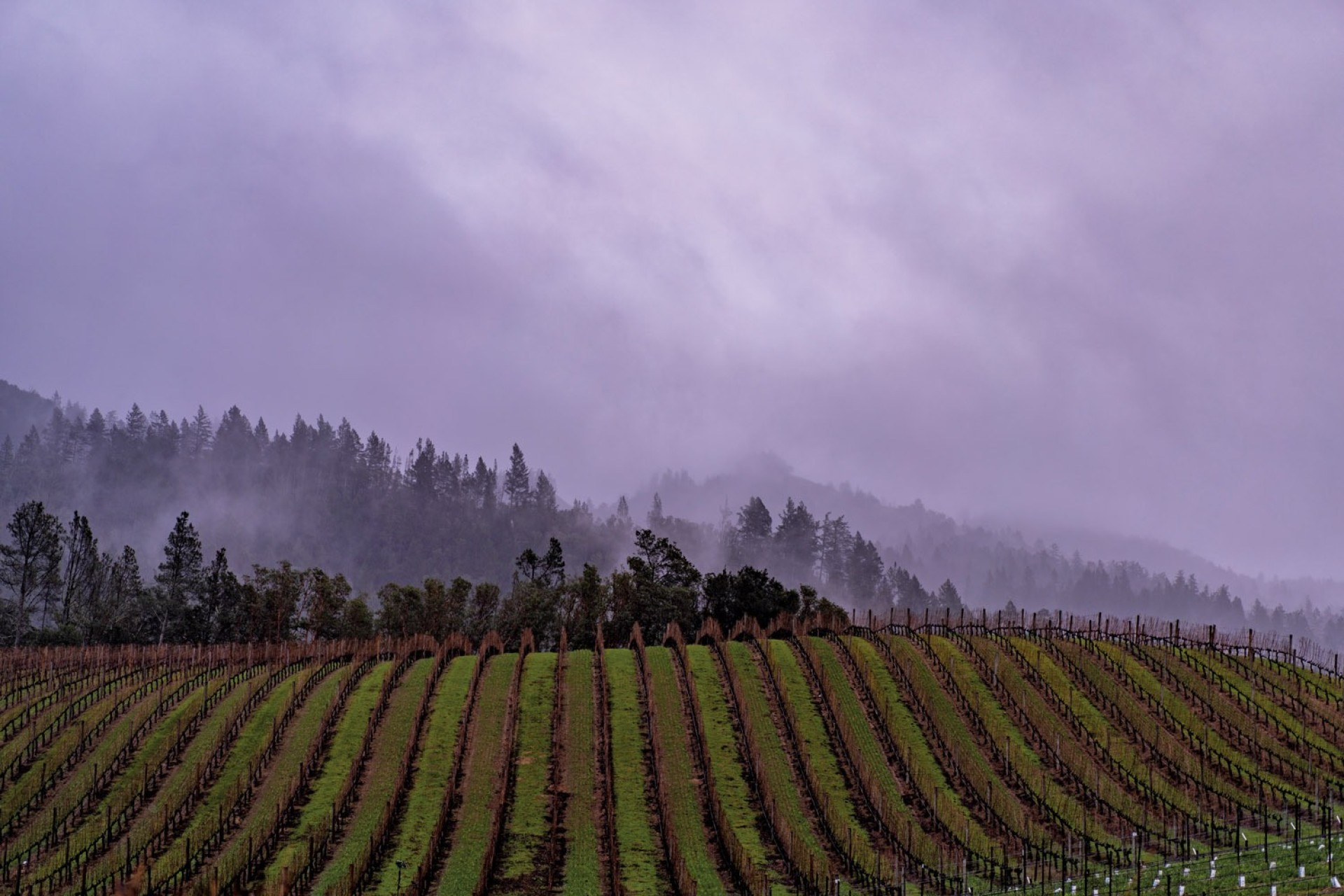
California’s coastal fog plays a vital role in the development of the region’s grapes.
The terroir at Seaview is quite distinct from our Knights Valley and Oakville Estates, which are volcanic in origin and relatively young in geologic time (only three to four million years old). The formation of Seaview involves an intricate ballet of three ancient oceanic tectonic plates and one continental plate. The North American Plate—which makes up most of California and the United States, as well as most of Central America, Cuba, the Bahamas, northeastern Asia, Iceland, and the Azores—is made up of continental crust, which is less dense than oceanic crust. Over forty million years ago, the oceanic Farallon Plate was moving eastward and collided with the North American Plate; being denser, it dove down and was subducted below the lighter continental plate over millions of years. During this process, oceanic rocks were scraped off and collected along the margin, creating the steeply dipping rock layers that underlie the vineyards.
Today, the Juan de Fuca Plate, a small remnant of the Farallon Plate, continues its march eastward and is being subducted, creating the volcanic activity in the Cascade Range to the north. The fourth plate involved in the story is the Pacific Plate, which has been moving northwest for the last forty million years. Near Seaview, it has been moving north over the last five million years along the San Andreas Fault system—which is only 1 mile (1.6 kilometers) west of the vineyard. Rocks and sediments west of the fault are traveling northward compared to our Seaview Estate. The rocks that make up the Seaview Estate’s terroir are part of what is known as the Franciscan Complex, a diverse collection of predominantly oceanic sediments mixed with some continental and volcanic rocks.
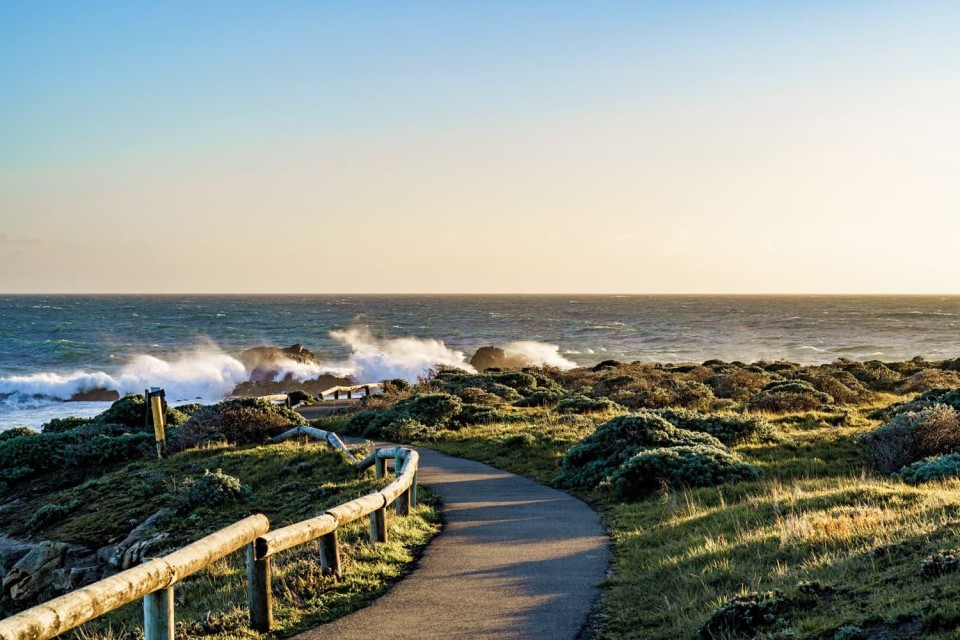
The cool ocean breezes make the Sonoma coast a haven for visitors seeking to escape the inland heat.
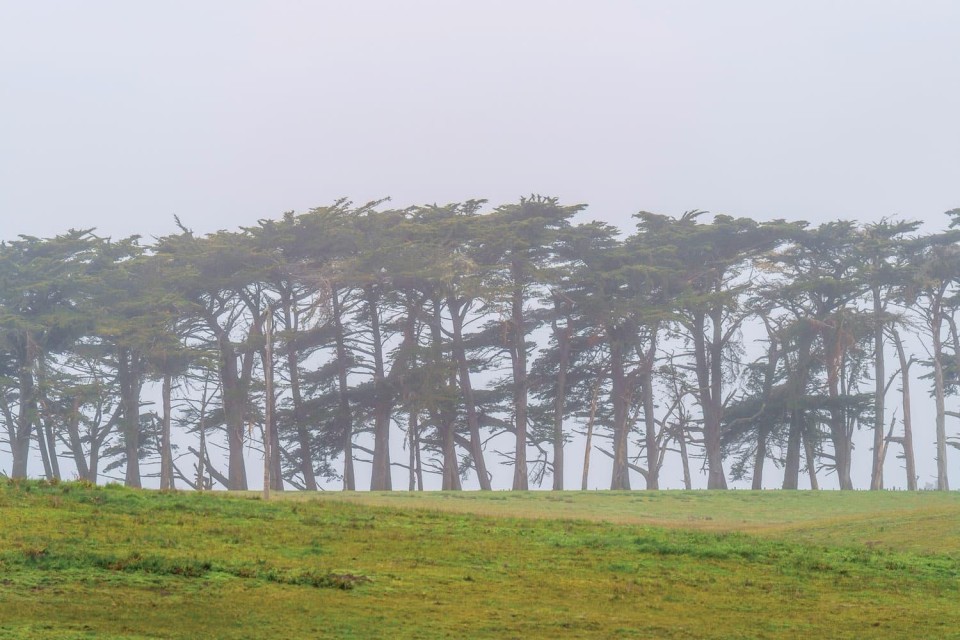
It turns out that the perception that Pinot Noir is more diverse and complex than other wines has some scientific basis. While taking a graduate course in wine chemistry during my studies in viticulture and enology at the University of California, Davis, I selected a project investigating the chemical composition of Pinot Noir. Interestingly, as opposed to some varieties with aromatics dominated by single chemical compounds—such as Muscat, with its monoterpene, or Shiraz, with its peppery rotundone—Pinot Noir aroma is a collection of subtle notes that spans a wide range of volatile chemical compound families. At varying levels, these compounds produce different aromas; they also interact with one another, creating still more aromatic compounds. This is part of what makes the characteristics of finished Pinot Noir wines so sensitive to the terroir in which they are grown.
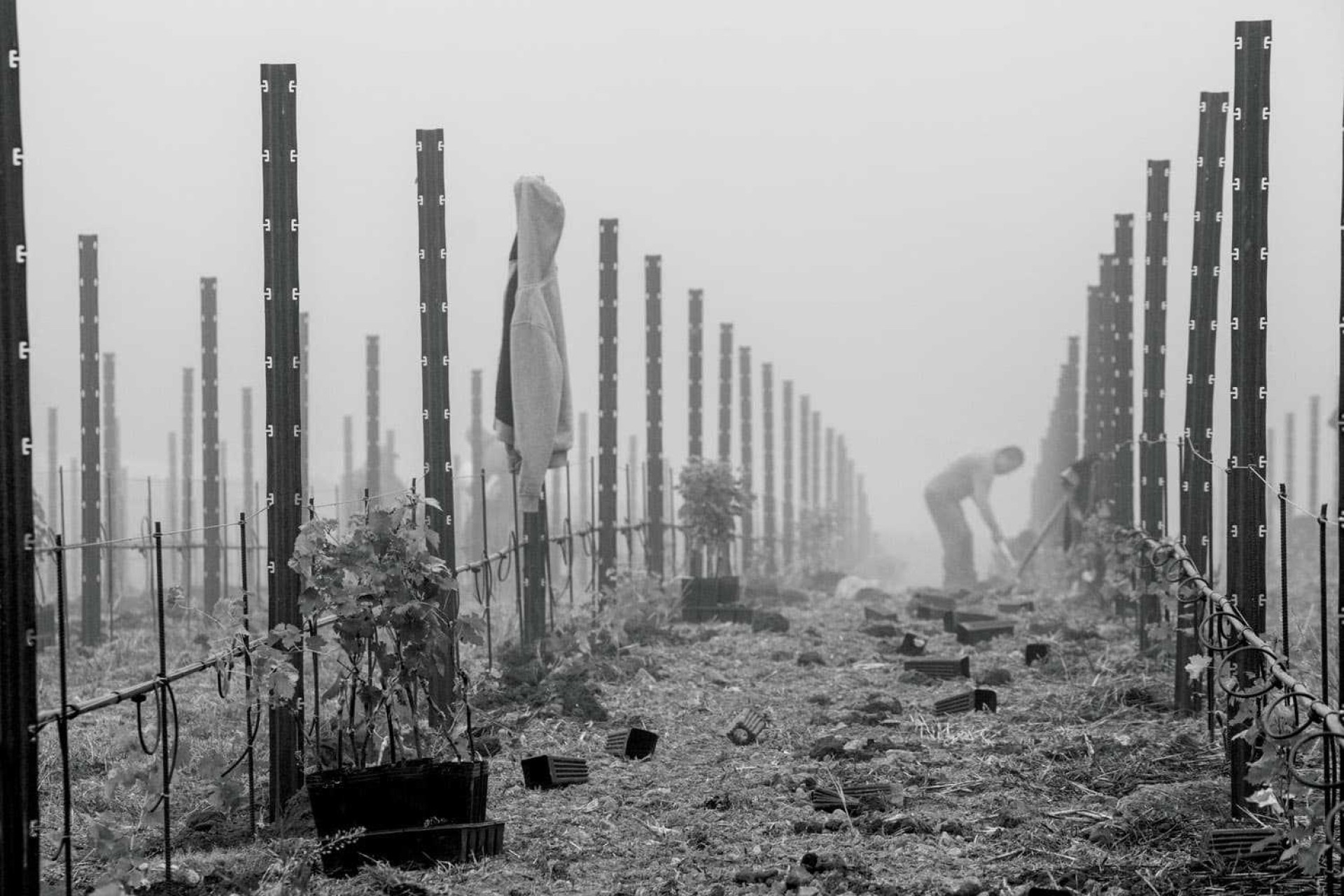
The Seaview team begins the replanting of a single block in the early morning hours.
Fifteen vineyard blocks spread over five slopes produce the distinctive wines of our Seaview Estate: ‘Le Caprice,’ ‘Ma Danseuse,’ and ‘Clos du Ciel.’ For those who have visited our Knights Valley Estate and marveled at the sheer steepness that the impressive La Carrière vineyard blocks display, two of the blocks in Le Caprice are even steeper (nearly 50 percent slope), with rows in a herringbone pattern down the slope. They present challenges to farm, sample, and harvest, but the fruit and wines are truly distinctive. Lively aromatics of red fruit and florals mark these vibrant contributors to the ‘Le Caprice’ blend. One block has rows sloping to the northeast and ripens earlier, giving vibrant wines, while the other slopes to the southeast, ripens later, and offers more base notes and breadth to the blend. The slope immediately to the south contains the highest and lowest vineyard blocks at Seaview, both of which contribute black cherry, blackberry, and floral notes to the ‘Le Caprice’ blend.
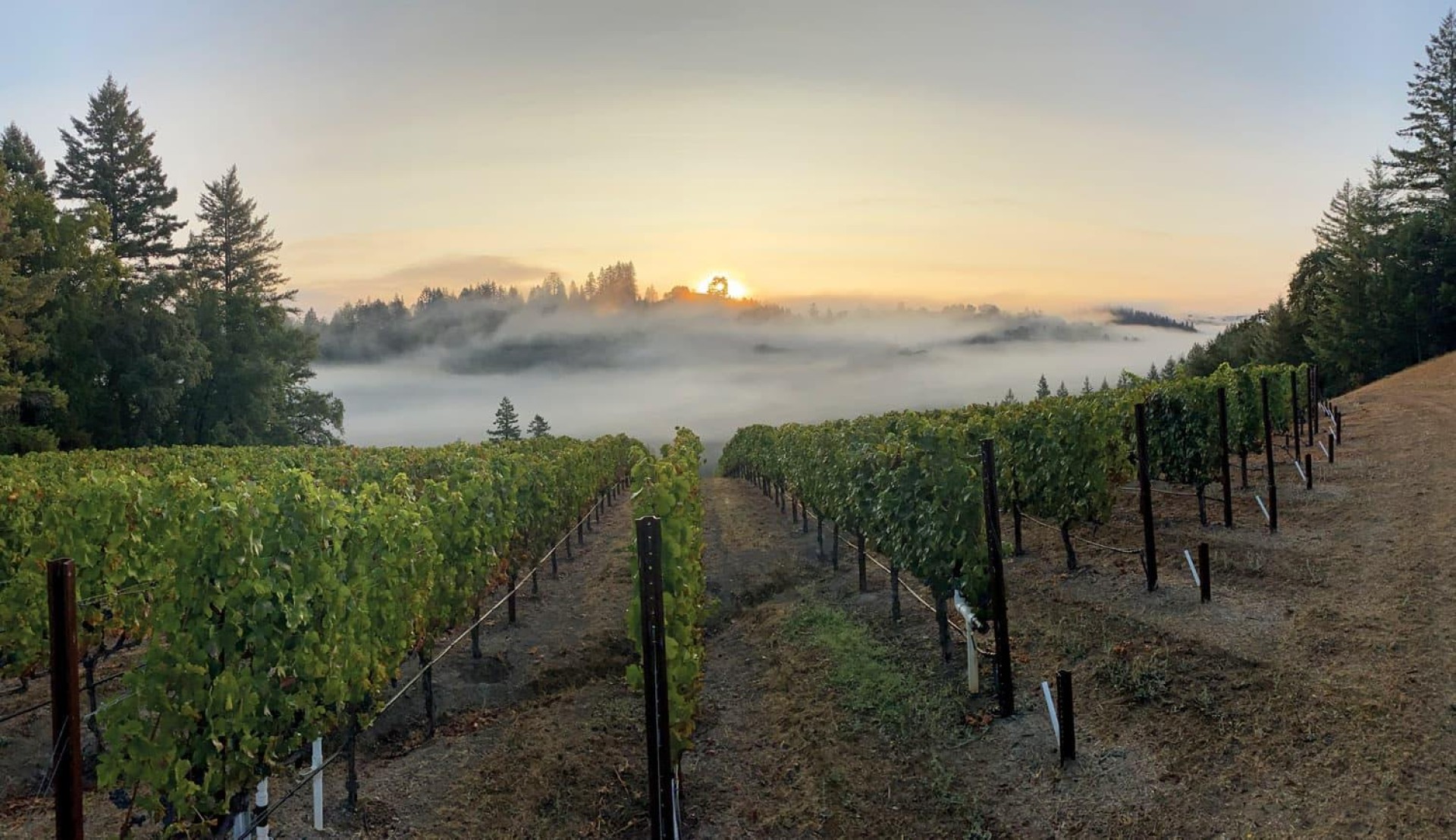
High above the beach, the Seaview Estate ridge sits just above the morning fog.
The northernmost slope at Seaview is part of the terroir that makes ‘Ma Danseuse.’ The cooler temperatures and breezes allow the fruit to ripen more slowly, and these are usually the last blocks to be harvested each year. The upper slope is crowned by a beautiful redwood grove, which provides some protection from ocean winds. This block is where the earthy notes and beautiful elegance of ‘Ma Danseuse’ originate. The slope just to the south contains the Ma Danseuse vineyard blocks that ripen earlier and contribute to the fine tannin structure and black fruit and floral notes in the blend.
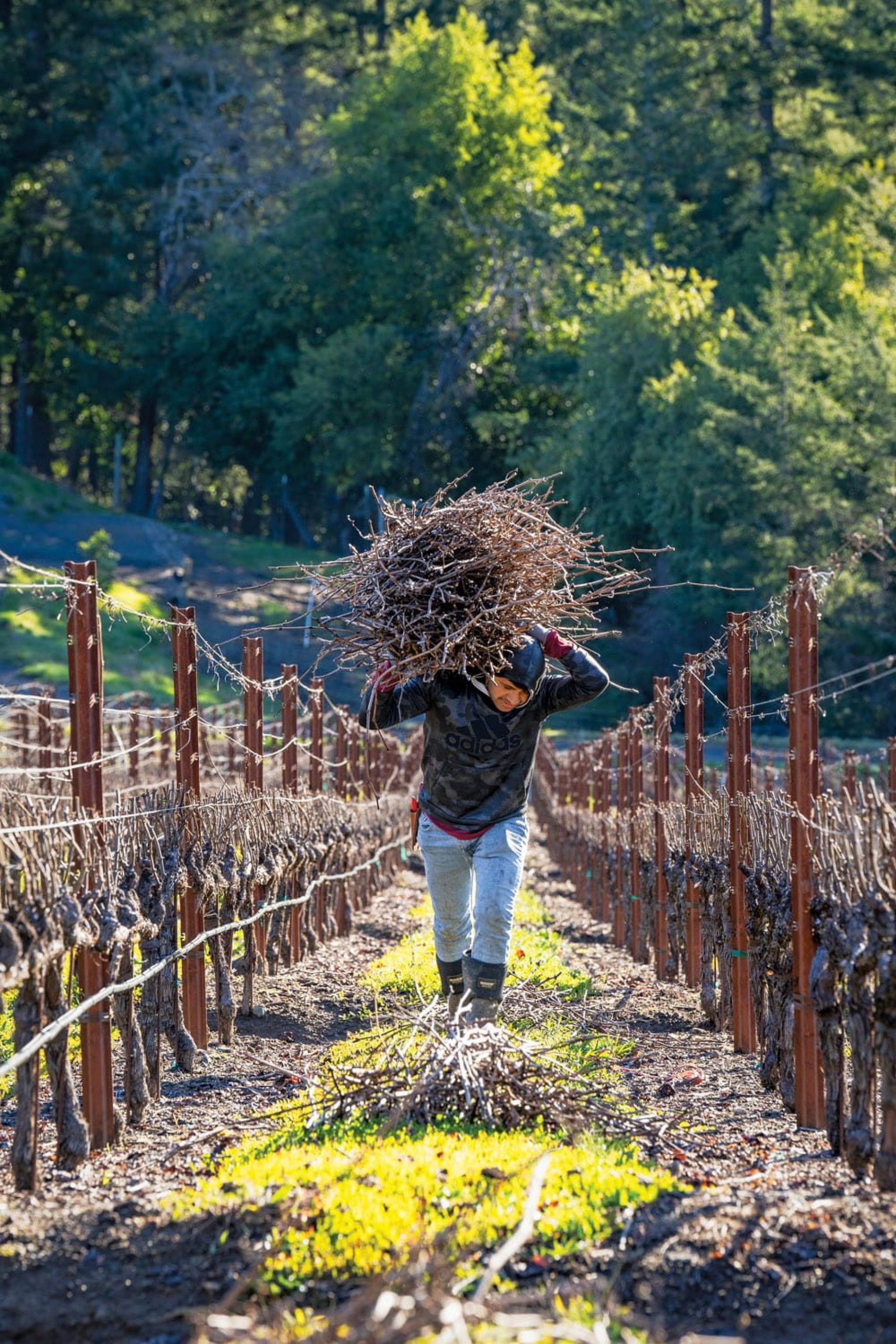
The southernmost slope at the Seaview Estate contains the tremendous terroir of ‘Clos du Ciel.’ Still, at a high elevation of 1,350 feet (411 meters), the slope is slightly more gentle than in the Le Caprice and Ma Danseuse vineyards. In the northernmost block on the slope, even the fruit during maturity sampling in the weeks leading up to harvest shows great concentration and depth, and the ripening period often extends to just before the final Ma Danseuse block is harvested. This block is a significant contributor to the noteworthy tannin structure and body that helps define the ‘Clos du Ciel’ cuvee. The adjacent block to the south is often divided into earlier and later ripening sections, which each offer distinct aromatic and structural components to the blend.
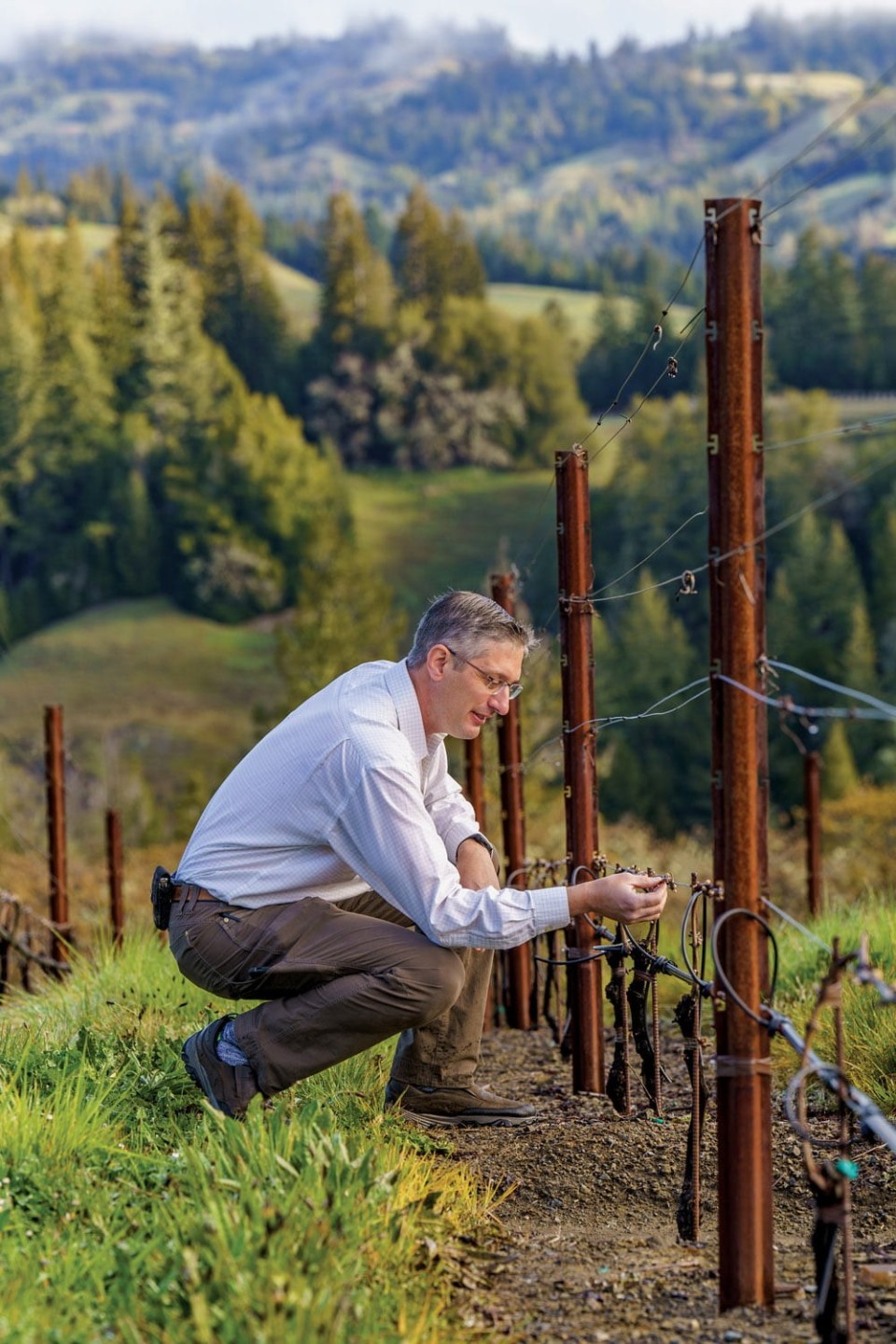
Robert inspects a young block of vines as they begin to swell. Budbreak is the period when the grapevine buds swell and burst into leaf—it is the first marker in the growing cycle, a point at which he can compare the current season to past years.
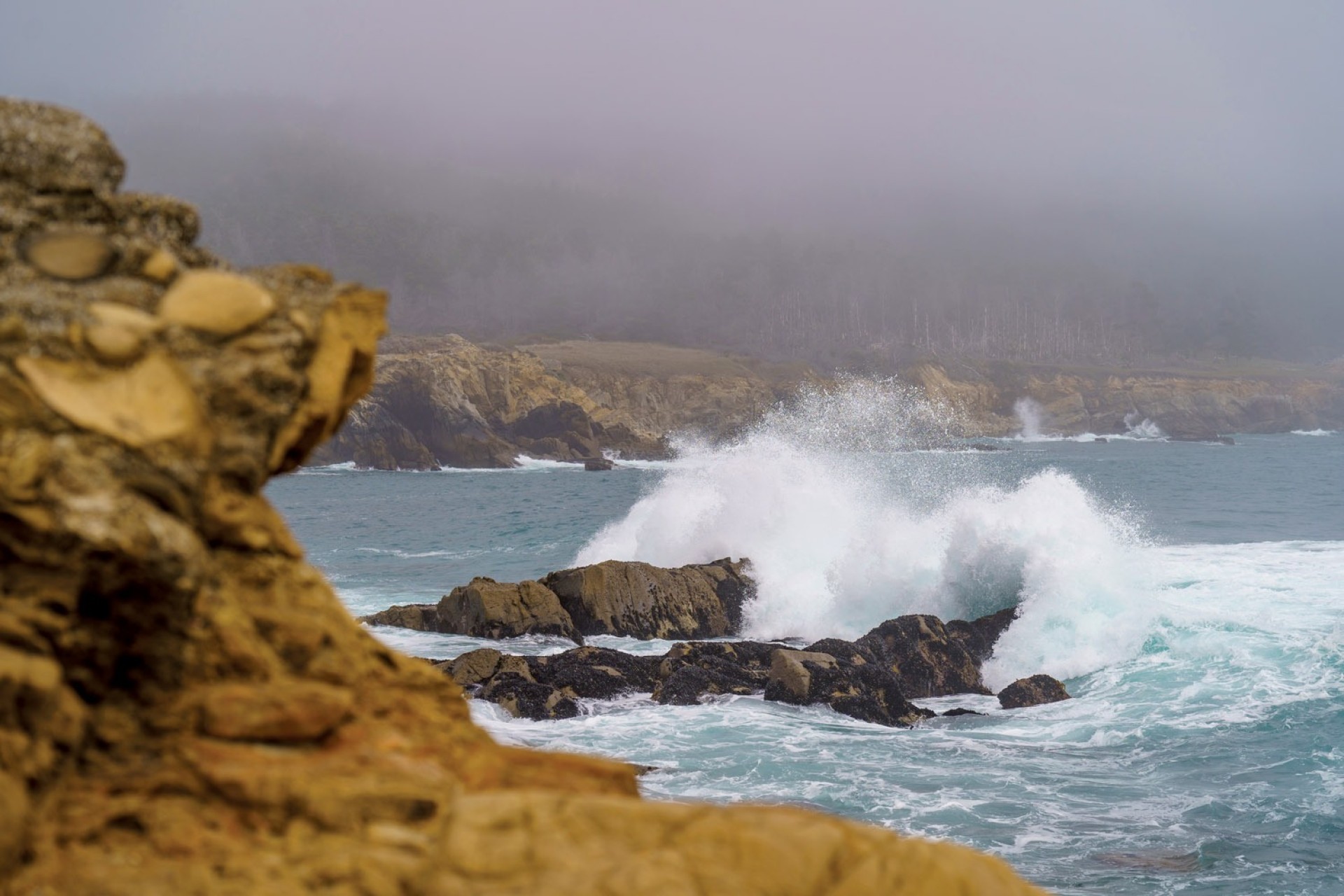
The Sonoma coast is famous for its surf, with large ocean swells crashing into the rugged coastline.
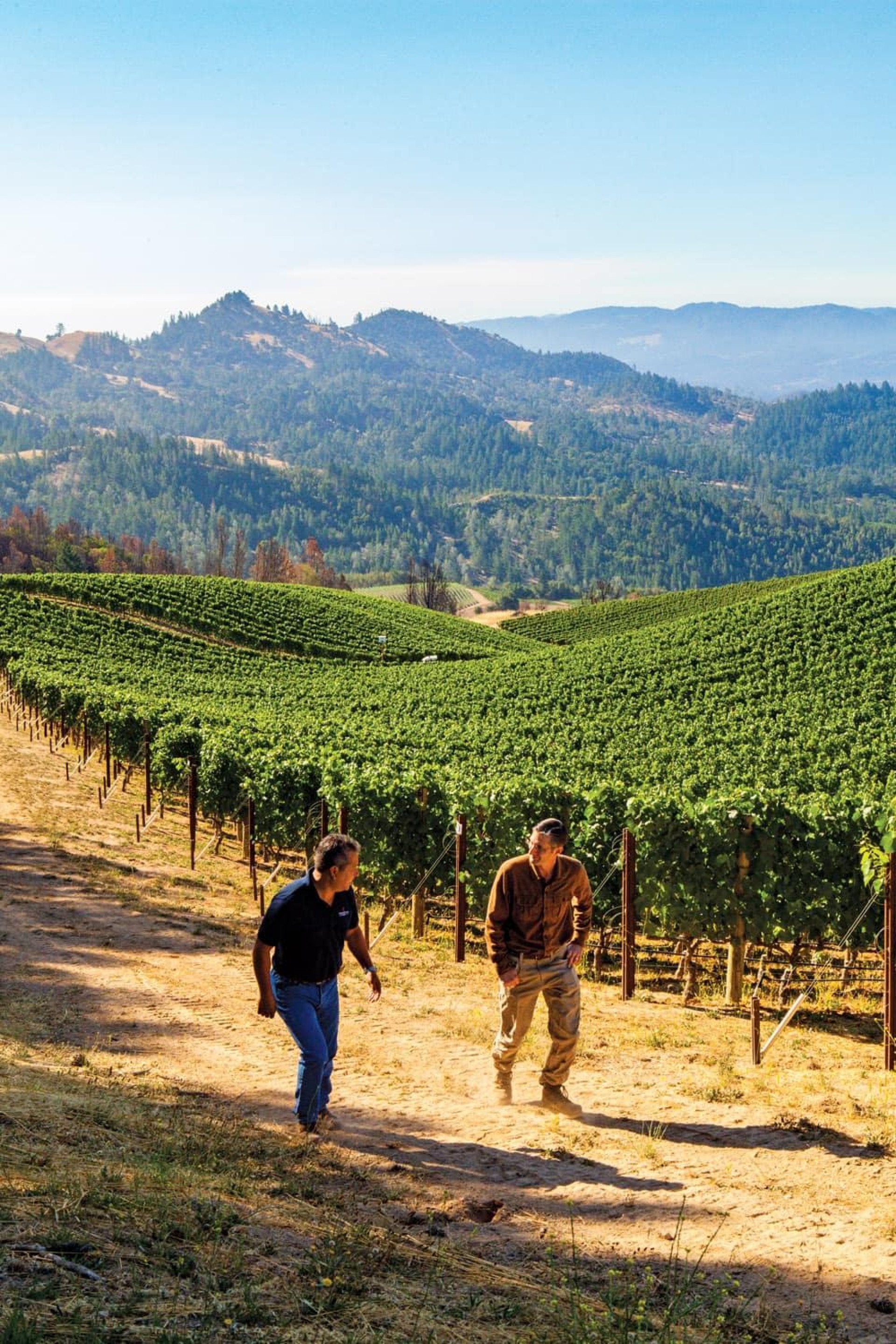
Javier and Robert hike the vineyard slopes, keeping each other informed during the growing season.
Simply put, the Seaview Estate is an extraordinarily unique site; while challenging, it is capable of growing remarkable Sonoma Coast Pinot Noir. To capture the full potential of the terroir, an equally impressive vineyard team meticulously tends the vines on a year-round basis. Our longtime vineyard manager, Javier Aviña, directs the team led at Seaview by thirty-year Peter Michael Winery veteran foreman, Jesus Olivares, who has been looking after the vines since the vineyard was established. The dedicated team drives out to the coast daily, working on the impressive slopes that offer such exceptional wines. When I am out sampling all the vineyard blocks before harvest, I average 8 miles (13 kilometers) of hiking per day at Seaview; the vineyard crew is working on these slopes throughout the year for each pass of pruning, suckering, shoot positioning, cluster positioning, crop and canopy thinning, and finally, hand-harvesting. Their dedication to upholding the highest standards in winegrowing is what shows in each glass of Pinot Noir.
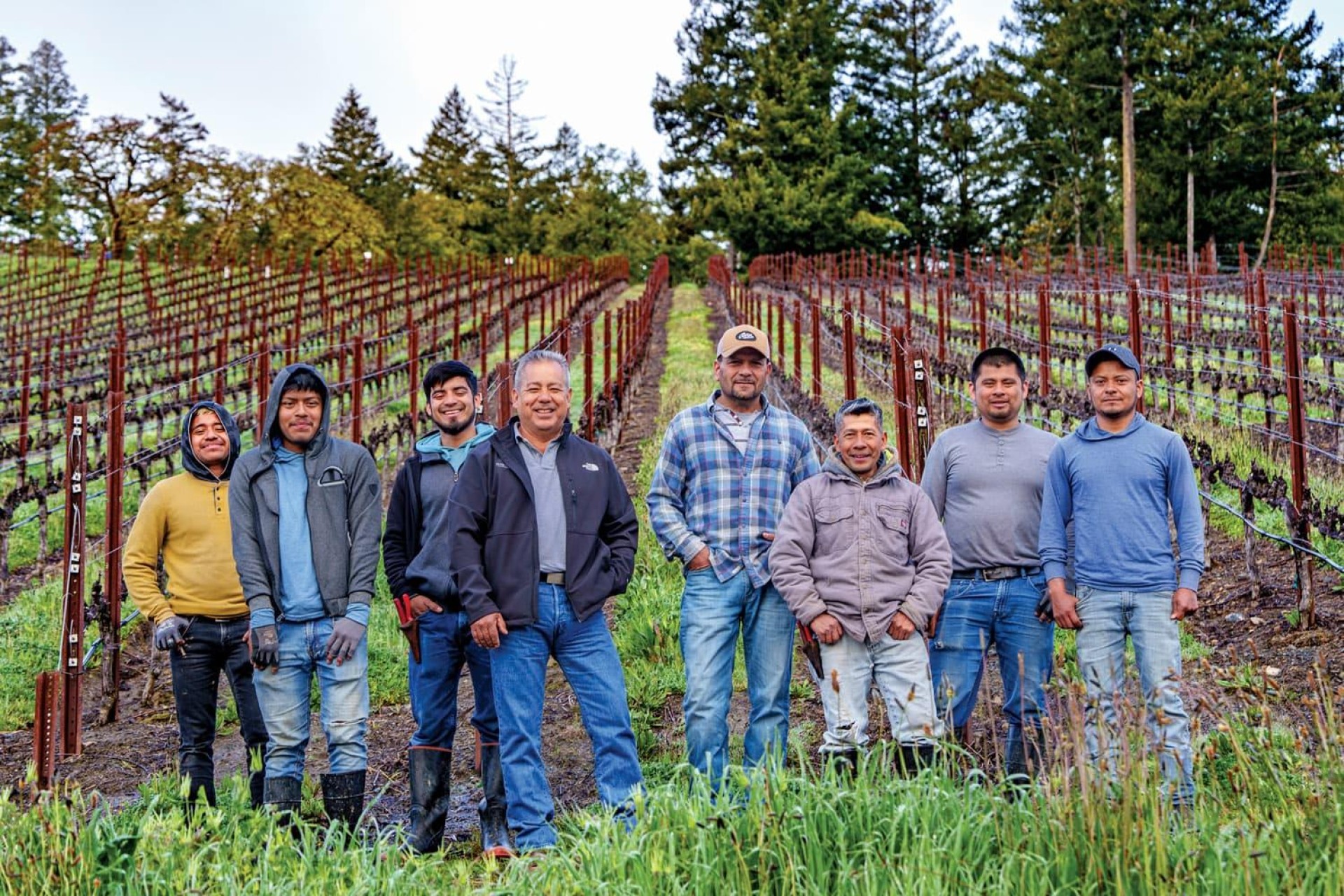
Each of the three estates has a dedicated team that cares for the vines throughout the year. The Seaview Estate team from left to right: Joel Velasco Quintas, José Torres-Carmona, Edgar Quintas Quintas, Javier Aviña, Jesus Olivares, Domingo Chávez-Cortes, Severiano Chavez Chávez, and Timoteo Carmona Rodriguez.

